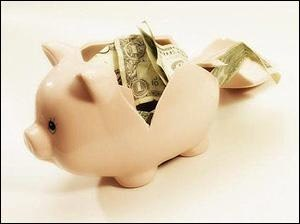Courtesy of Pam Martens
 According to Bloomberg LLP data crunched by the Financial Times, there are more than 300 companies preparing to launch their first ever publicly traded shares known as an Initial Public Offering or IPO in the U.S. Many of these companies have never seen a dime of profits – a harbinger of bad things to come for investors if history is any guide. The IPO stampede seems more motivated by venture capitalists wanting to lock in profits before another stock market meltdown like that which occurred in December than a sincere effort on the part of Wall Street investment banks to bring companies with solid prospects for survival to help boost American jobs and the U.S. economy.
According to Bloomberg LLP data crunched by the Financial Times, there are more than 300 companies preparing to launch their first ever publicly traded shares known as an Initial Public Offering or IPO in the U.S. Many of these companies have never seen a dime of profits – a harbinger of bad things to come for investors if history is any guide. The IPO stampede seems more motivated by venture capitalists wanting to lock in profits before another stock market meltdown like that which occurred in December than a sincere effort on the part of Wall Street investment banks to bring companies with solid prospects for survival to help boost American jobs and the U.S. economy.
A unicorn is a private company valued at more than $1 billion and there will be a number of unicorns IPOing this year if their backers have their way and the stock market doesn’t tank. One of those is the ride-hailing firm Lyft which was priced last evening at $72 a share and will begin its first day of trading this morning on Nasdaq. TechCrunch.com reports that Lyft “posted losses of $911 million in 2018, a statistic that will make it the biggest loser amongst U.S. startups to have gone public, according to data collected by The Wall Street Journal. On the other hand, Lyft’s $2.2 billion in 2018 revenue places it atop the list of largest annual revenues for a pre-IPO business, trailing behind only Facebook and Google in that category.”
Another unicorn prepping for its IPO is Pinterest. Motley Fool writer Chris Neiger reports that Pinterest “lost $63 million in 2018, but that was a huge improvement from its $130 million loss in 2017.” Neiger also notes that another mega unicorn with imminent IPO plans is Uber, another ride-sharing firm. Neiger writes that “Uber lost $1.8 billion in 2018, down from a loss of $2.2 billion the year before, and it could take some time before the ride-sharing company closes the gap between its sales and profits.”
Uber’s losses would seem staggering in a more rational era but there is nothing rational about this market.
Last year Jay Ritter, a finance professor at the University of Florida, provided data showing that 83 percent of all IPOs launched in the U.S. through the third quarter of 2018 had negative earnings. How might these stock offerings fare over the longer term? Comparing data dating back to the 1980s, Ritter told CNBC last year that “The average return on the first day has been about the same, but over the next three years the profitable company IPOs have beaten the unprofitable company IPOs by about 6 percent per year.”
Should American investors actually need historical charts and graphs to figure out that a company showing consistent profits is more likely to outperform a company showing consistent losses? Apparently investors do need a reminder in the United States where Wall Street has an uncanny ability to put lipstick on a pig IPO, convince tens of thousands of retail brokers summoned to attend IPO roadshows to hype the shares to their clients, penalize brokers if their clients want to grab profits on the first day of trading, and where the Wall Street investment bank underwriter can legally prop up IPO stock prices in the early days of trading under what is known as a “stabilizing bid.”
…



